First drive: 2018 Ferrari Portofino in Italy
It seemed a no-brainer that Ferrari would launch the Portofino in the picturesque northern Italian fishing village after which it is was named. However, company execs say Portofino is a ghost town in winter – everything shuts down – so instead we find ourselves in Puglia, in the south eastern tip of Italy, for our maiden acquaintance with Maranello’s all-new drop-top that replaces the California T.
The newbie launches here in May and will be the Prancing Horse’s new ‘entry-level’ model with a base price of Dhs 811,990 when it lands in local showrooms. It’s set to occupy a somewhat unique space in the market, as Mercedes-Benz’s SL is the only other folding hardtop that sits in the premium end of the convertible market. All the other contenders – Aston Martin DB11 Volante, Bentley Continental GTC, Maserati GranCabrio, Porsche 911 Turbo Cabriolet et al – have canvas roofs.
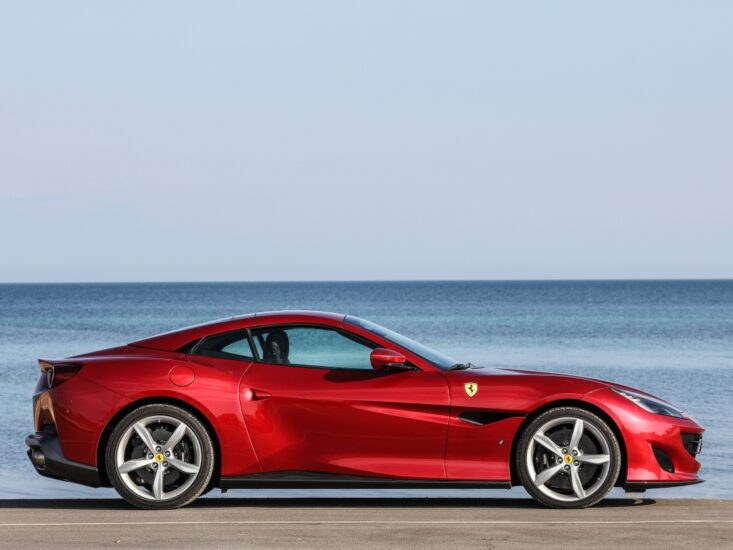
What’s more, when it comes to raw point-to-point pace, only the Porsche would be remotely in the same league as the Portofino. Under the Ferrari’s sloping snout sits a 3.9-litre twin-turbo V8 – a derivative of the powerplants found in the GTC4 Lusso T and 488 GTB – and in the Portofino this motor is good for 600 hp at 7500rpm and a towering 760 Nm from 3000-5250 rpm.
Considering it’s stuffed with all the hardware that goes with a folding metal roof, the Portofino isn’t overly lardy at 1664 kg (80 kg less than the California T), and this is partly the key to a brisk 0-100 kph split of 3.5 seconds and 0-200 kph in 10.8 seconds. Keep your right foot pinned to the firewall and the Portofino will top 320 kph.
The naysayers were adamant the outgoing California wasn’t a ‘true Ferrari’ (and they weren’t entirely wrong), so the backroom boffins have worked hard to give the Portofino bigger cojones than its predecessor. This is immediately evident as soon as you lay eyes on the car.
Where the California looked dainty and feminine, its successor drips with visual machismo. The thrusting beak now looks as though it wants to feast on the tarmac for lunch. The slitty headlights (somewhat akin to those worn by the 812 Superfast and 488 GTB) also combine well with the elaborately contoured bonnet – replete with bulging power dome and beautifully sculpted air vents – to give the Portofino a face that says: “don’t mess”.
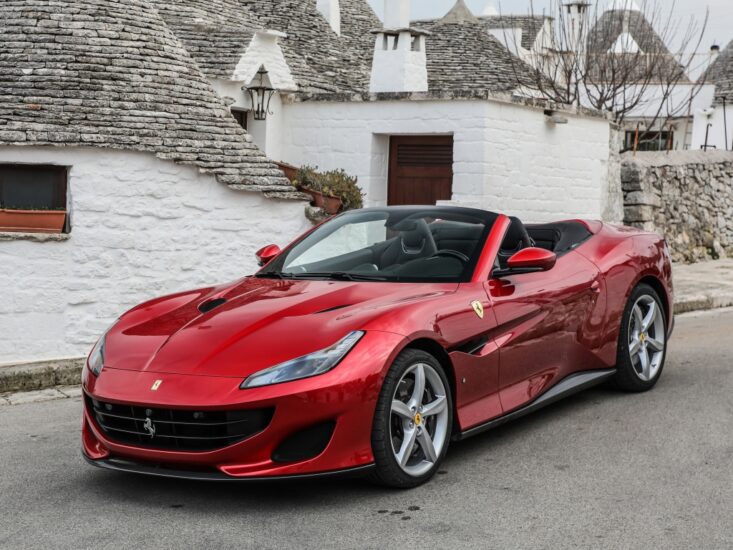
But the biggest improvement is to the profile as the California’s three-box proportions (whereby the bonnet, cabin and boot were separate sections) have been ditched in favour of a fastback shape in which the roof (when up) flows seamlessly in a single uninterrupted line to the ducktail rear spoiler.
Walk all around the Portofino, scrutinise it from all angles, and you’ll be hard pressed to find any jarring lines or contours. The roof can be made to disappear into the rear compartment (push a button and this is accomplished in 14 seconds), and even with the top down the Portofino retains a sense of visual purity.
The California was conceived to snare a new audience for Ferrari (and it did that, as 70 per cent of its customers were new to the Prancing Horse fold), but the purists weren’t pleased it was a much softer car than one would expect of something that’s rolled out of Maranello. It didn’t go as hard in a straight line as its stablemates, and nor did it corner with the same organ-compressing vigour. The updated California T addressed this to some degree, but even it didn’t quite get there.
So, the brief set out to the lab coats in designing and engineering the Portofino was to give it some sharper teeth, yet not at the expense of comfort and refinement. Have they succeeded? Well, yes and no.
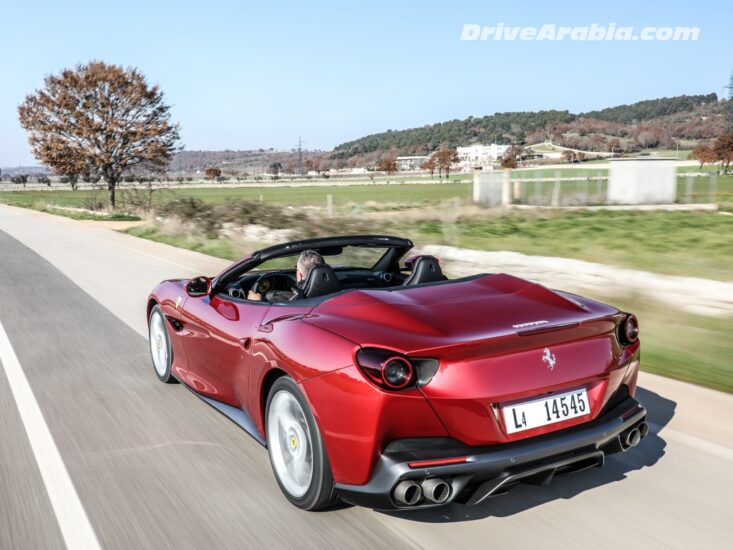
The Portofino certainly doesn’t lack straight-line punch, and the low- and mid-range reserves of its twin-turbo V8 are immense. But the piece de resistance is undoubtedly the seven-speed dual-clutch transmission, which is arguably the finest gearbox you’ll find in any car in the market. Lightning-quick to shift up or down, you also get a real sense of mechanical connection to the gearbox via the elongated flappy paddles (not the mouse-click feel you get with most such set-ups).
As it turns out, the weather gods are absolutely hurling down precipitation on the day we’re driving the car, which means we only drop the roof during a brief respite in the rain. So, rather than having our scalps baked by the sun, our focus today is on the Portofino’s comfort and dynamics.
As with every other Ferrari – barring the V12-powered GTC4 Lusso – the Portofino is rear-wheel-driven, so the peak torque quota of 760Nm has to be transmitted to the tarmac (very slippery on this sodden day) via only two contact patches of rubber. We keep the Manettino (drive mode selector on the steering wheel) in ‘Sport’ for most of the drive, and this setting permits a fair degree of side-slip leeway before rousing into action. We say that’s no bad thing, but unwary drivers may be alarmed when the car suddenly kicks sideways as you gas it up out of tight corners (especially if it’s raining).
The Portofino also makes the transition to electric power steering (it was hydraulically assisted in the California T), and there’s no doubt some degree of tactility has been lost in the process. Yes, the tiller is still crisp and accurate, but there’s a slight lack of on-the-limit feel – this is particularly the case on wet roads.
And while the twin-turbo V8 is a mighty engine with a barrel-chested mid-range, it’s a bit deficient in the sound department. Oh, there’s noise, alright – quite a bit of it when you’re on the throttle – but it’s just a droning racket. There’s none of the operatic vocals that are such an intrinsic part of Ferrari’s peerless naturally aspirated engines.
Ever tighter emission regulations forced Ferrari to go down the turbo route, so this was an inevitable consequence, but we’d point out that the likes of Mercedes-AMG have shown that it is possible to build force-fed engines that make the hairs on the back of your neck stand on end via their exhaust note alone. Even the Porsche 911 Turbo is quite pleasing to the ears.
While we’re getting the gripes out of the way, we found the Portofino’s ride quality to be a touch on the jarring side – even with the Manettino knob in ‘Comfort’ mode. That said, we should point out the backroads in Puglia have surfaces that range from patchy to downright abominable, so they did absolutely nothing to flatter the Ferrari’s suspension set-up. Given that most roads in the GCC (especially in the UAE) are billiard-table smooth, the Portofino’s chassis should cope just fine in our region.
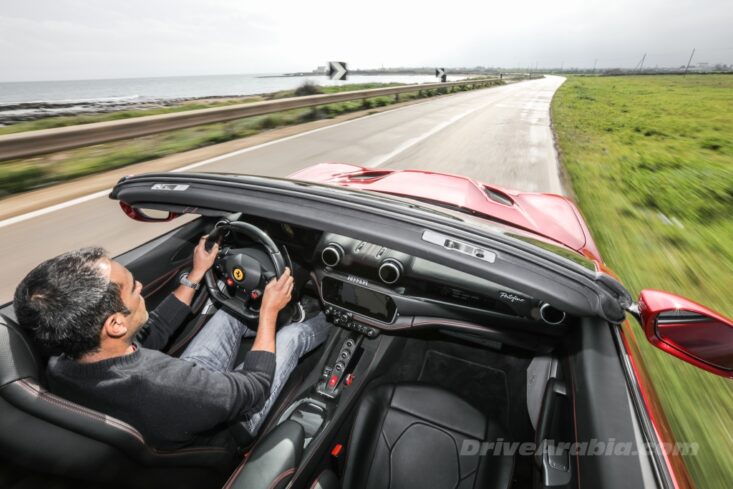
On the whole, the Portofino is a very usable express GT, and its everyday, all-purpose credentials vis-à-vis the California are bolstered via an additional 5cm of rear legroom. Mind you, no adult would want to sit in the back for a trip from Dubai to Muscat, but the rear seats are perfectly adequate for two grown-ups after a night out on the town. And while the boot may not be vast, its 292-litre capacity is sufficient to swallow three airline cabin trolley bags (two with the roof down), which means the Portofino is a realistic weekend getaway car for two or three people.
The Portofino’s cabin features all the familiar Ferrari design elements, including the quartet of circular vents, plus the slimline floating centre console with a trio of knobs (for the transmission and launch control). Our car’s interior is trimmed in black leather with red stitching, which looks rather good, but the cheap looking plastic switches for the HVAC settings detract slightly from the ambience of a car that commands a Dhs 800,000-plus outlay.
As mentioned earlier, the engine/gearbox combo is smooth and seamless, and the Portofino can sit at an effortless 140kph cruise all day long (actually, much faster if you’re not too worried about losing your license). Yes, a Bentley Conti GTC or Mercedes SL would be more comfortable, but neither of these would see which way the Ferrari went as soon as the road got twisty. The tautness and agility of the Ferrari’s chassis (which has a slightly rear-biased 46:54 weight distribution) would be matched only by the likes of the Porsche 911 Turbo Cabriolet.
It may not be as laugh-out-loud fun or engaging as its manic 812 Superfast or 488 GTB siblings, but there’s still plenty to like about the Portofino. The all-new drop-top looks appropriately muscular and dramatic, goes like the clappers and ticks the requisite boxes as far as practicality goes. The Portofino isn’t the ultimate Ferrari, but it’s arguably the most versatile and usable one.
Photos by Ferrari.
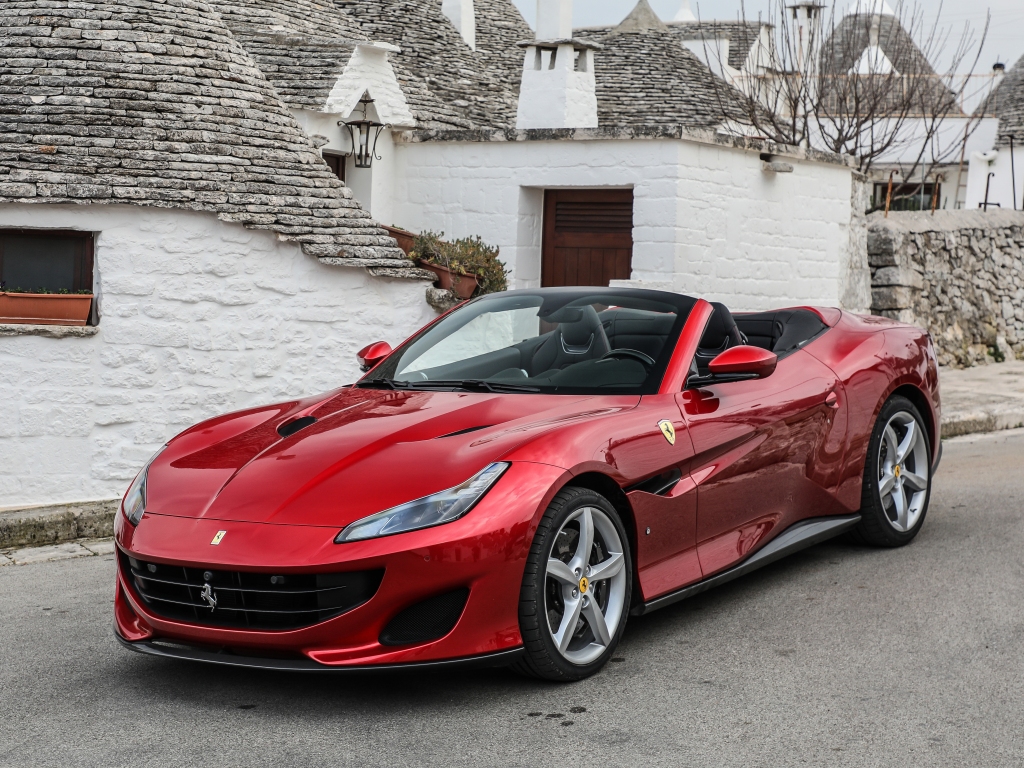
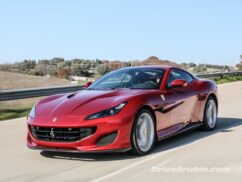
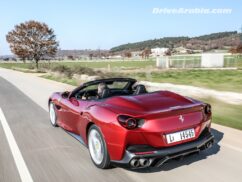
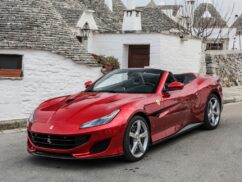
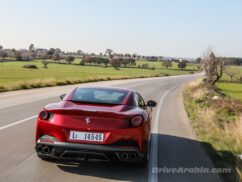
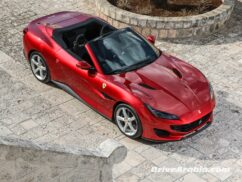
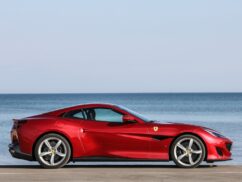
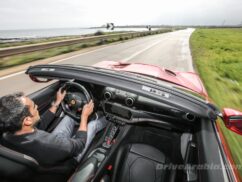
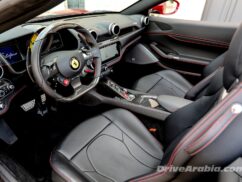
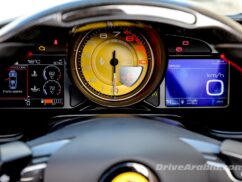
There are no comments. Be the first!